The Bisti Badlands is a secret gem of the American Southwest that contains some of the most unusual scenery you could find anywhere. Although it’s easily accessible, only about three thousand people visit this wilderness wonderland annually–about ten people per day.
The low popularity is probably due it its remote location, lack of facilities, and absence of marked trails. However, since the main attraction of Bisti is its fragile and delicate formations, having fewer visitors is probably good.
The formations have existed for thousands of years and can be destroyed in a moment by a single misstep. So, if you visit, be sure to explore the pristine wilderness with extreme care.
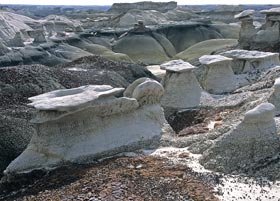
When I first learned about Bisti from another photographer, the images I saw immediately put it high on my priority list of places to explore and photograph. I finally made it there a few years ago, and I wasn’t disappointed. The area offers an incredible display of hoodoos, cap rock formations, and petrified wood.
Bisti is easy to hike and roam with little effort. Because so few visitors go there, you can spend a full day exploring and see only two or three other people. You feel like you own the place as you enjoy the peace and solitude.
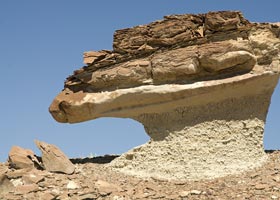
How To Find The Bisti Badlands
The Bisti Badlands are tucked away in the four-corners region of the Southwest, just south of Farmington, New Mexico. The region is rich with oil and coal production, and Farmington is the central city for mining.
In fact, there have been efforts to drill and mine directly in Bisti, and some coal mining actually did occur years ago. Fortunately for our wild and natural lands, mining was terminated when the badlands became federally protected. Coal slag, the remains after mining, is still visible along some borders of the badlands.
Visitors can access Bisti along Highway 371, just 36 miles south of Farmington. A sign indicates a gravel road that leads to the badlands from the highway. The road continues for about two miles until a “T” in the road; a turn to the north brings you to the parking lot two miles later.
After parking the car, you just start walking east into the large wash in front of the parking lot. Eventually, you’ll want to turn either north or south, depending on where you want to explore.
A quick and easy area to explore is to the south or right of the wash, beginning about a half mile from the parking lot. This approach provides a great introduction to Bisti and a lot of fun in just a few hours. Also, you can’t get lost in this area; the wash remains in sight from almost wherever you are.
However, you’ll need to climb the slopes or hills that dot the landscape in order to find the sandstone formations and hoodoos for which Bisti is known. They’ll generally be at the top of the slopes. You might have to explore a little before you find a group of formations, but eventually you’ll be well rewarded.
One of the areas we discovered we nicknamed “Mushroom City.” It is filled with sandstone columns topped off with cap rocks, reminiscent of a garden of mutant mushrooms.
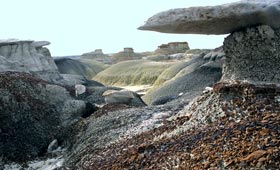
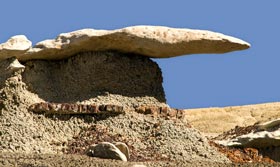
North, or left of the wash, is where the heart of the badlands begins and where formations extend for miles. As I mentioned, there are no marked trails in Bisti, but it’s easy to know when to start heading north: a chain link fence runs parallel to the wash, and when the fence turns north (about three fourths mile from the parking lot) it’s time to head north.
The fence also serves as a landmark on the way back. Having a point of reference is important, since everything can begin to look the same as you wander deeper into the wilderness. So, keep track of where you are or bring a GPS.
About a mile after you head north out of the wash, you’ll begin to spot interesting formations and, probably, petrified wood. Hike up and around the rises to enjoy great views and to scope out the canyons in the distance. Look at the ground, also. There’s a lot of petrified wood, and if you’re not watching for it, you’ll miss it.
One day we wandered in a couple of miles and came to a cliff overlooking what seemed to be the mother lode of the badlands. Canyons, hoodoos and formations lay as far as we could see. It was incredible.
Using our long lenses as scopes, we could spot incredible formations in the distance that were calling to us, but we knew if we hiked too far out, we’d never get back to the car before dark. So, we wandered a mile or so and ended up in what felt like a museum of rock sculptures.
I wish words and photographs could adequately describe the scenery at Bisti, but visiting is the only way to really appreciate it.
One of the bonuses at Bisti is the petrified wood. We encountered piles of it and saw logs that seemed to be freshly cut, even though they were millions of years old. Petrified stumps stick out of the ground along with chips, lumber, and logs throughout the region.
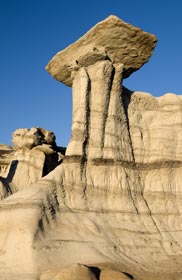
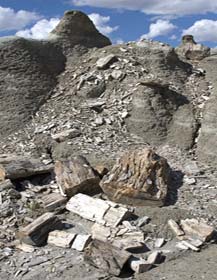
For photography, I bring a full range of lenses from wide-angle to telephoto, including three necessities: 12-18mm; 24-120mm and 80-400mm. A sturdy tripod is a must for both stability and composition. A polarizer filter comes in handy, too, especially since the skies are bright and clear in the desert. Be careful not to over polarize, though. With low humidity, the desert sky is usually very blue without help.
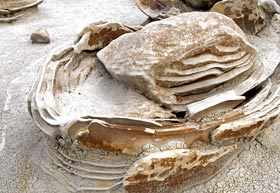
Experiment with a wide-angle lens on individual formations to create some interesting images. The “Stone Garden” (also known as the “Cracked Eggs”), which is located about two miles directly east of the parking lot (a straight shot through the wash), lends itself especially well to wide-angle shots.
You can shoot great photography at Bisti from close to the ground, shooting upward–especially ground-level formations.
Bisti is normally very dry and dusty, so be extra careful when you’re changing lenses. Keep your camera bag or backpack zipped at all times and check your digital camera sensor for dirt and dust. Even with automatic sensor cleaners, dust can become an issue.
Bisti Badlands is full of wonder and rich with discovery–an incredible experience.
If you visit, be sure to tread lightly and protect this fragile and delicate region. When you explore the outdoors and enjoy our natural lands, leave everything as it was when you arrived and exploring will be a rewarding experience for everyone.
by Clifford Kolber
Photography by Clifford & Doris Kolber

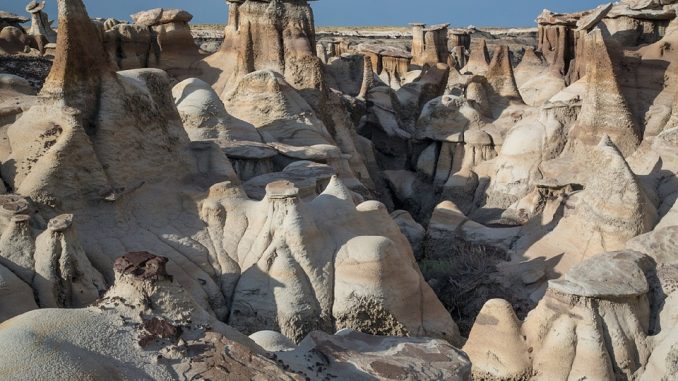
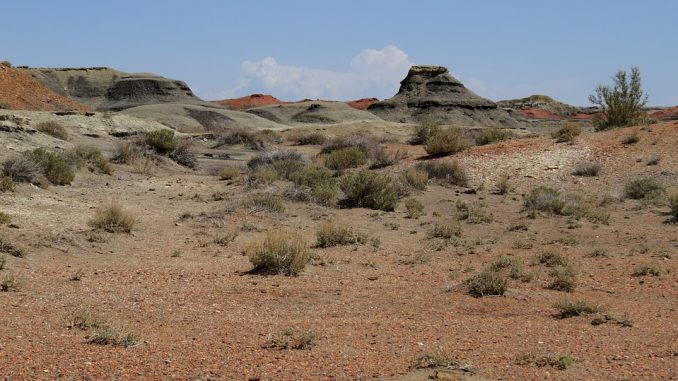
Leave a Reply